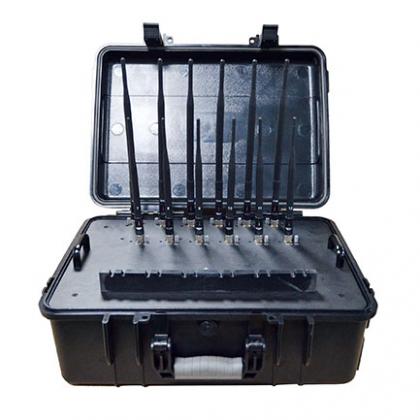High-frequency transformers and inductors used in power supply systems, such as flyback transformers used in cathode ray tube (CRT) displays, usually have a strong radiated magnetic field, but because the working frequency of this transformer is consistent with the line deflection frequency of the CRT , So its radiated magnetic field will not have a significant impact on the visual effect. However, in some ultra-high resolution CRT displays, because the horizontal deflection frequency increases with high-speed scanning, the operating frequency of the power transformer cannot be kept consistent with it, and the power supply can only work at a frequency lower than the CRT scanning frequency. In this case, even if the working frequency of the power supply is completely consistent with a certain harmonic frequency of the scanning frequency of the CRT, the electromagnetic radiation of the power transformer will still cause obvious interference to the image of the CRT display, making the visual effect worse. The higher the operating frequency, the more significant the interference.

Shielding method and design
The signal jammer structure of the high-frequency power transformer used in this design is composed of three parts: the magnetic circuit, the winding installed on the magnetic circuit, and the shielding cover of the outer surface layer of the field strength structure, which includes most of the electrical characteristics and the magnetic circuit Completely consistent continuous magnetic loop and partial winding components. At the same time, in order to prevent arcing, air gaps and epoxy resin should be used to increase the thickness of the shielding layer in the strong electric field area at a certain distance from the surface of the winding component with higher electric field intensity.
Here is a typical design example of this kind of shielding: set a continuous shielding loop on the electrical characteristics in the lower electric field area close to the high-frequency transformer winding; set another continuous on the electrical characteristics in the higher electric field area near the periphery of the winding For the shielding loop, it should maintain a sufficient space distance from the winding to prevent electrical breakdown of the dielectric (here, air and epoxy resin) inside the shielding loop. In this way, it is possible to select the shape of the same field strength in combination with the appropriate selection of the number of continuous loops on the electrical characteristics, the shape of the shielding ring and its spacing, so that the high-frequency power transformer can obtain a relatively complete shielding effect. On the basis of this structural form, we can appropriately change the size and layout of the shielding ring to provide a distributed radiator for the transformer and enhance the cooling effect of the transformer.
